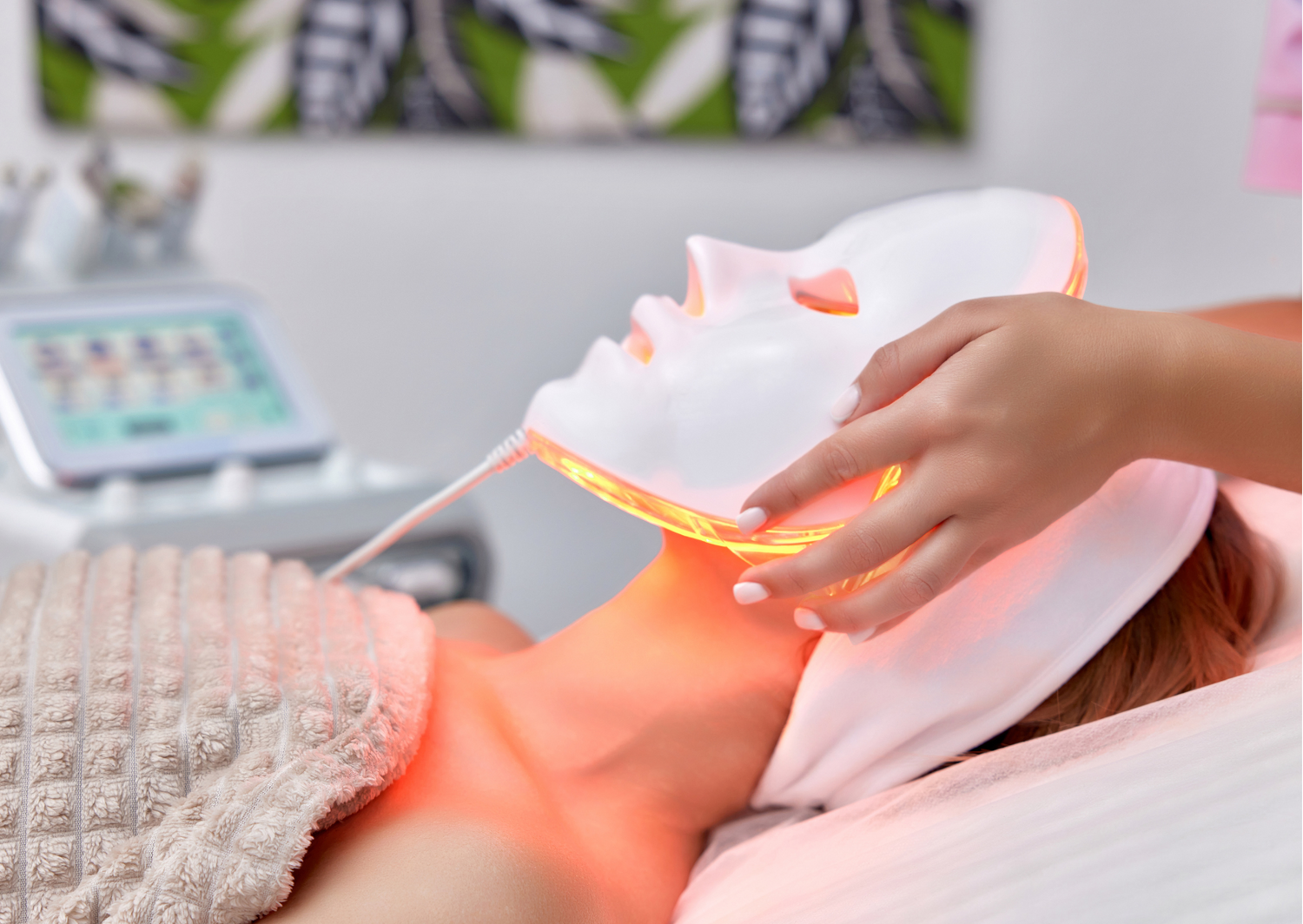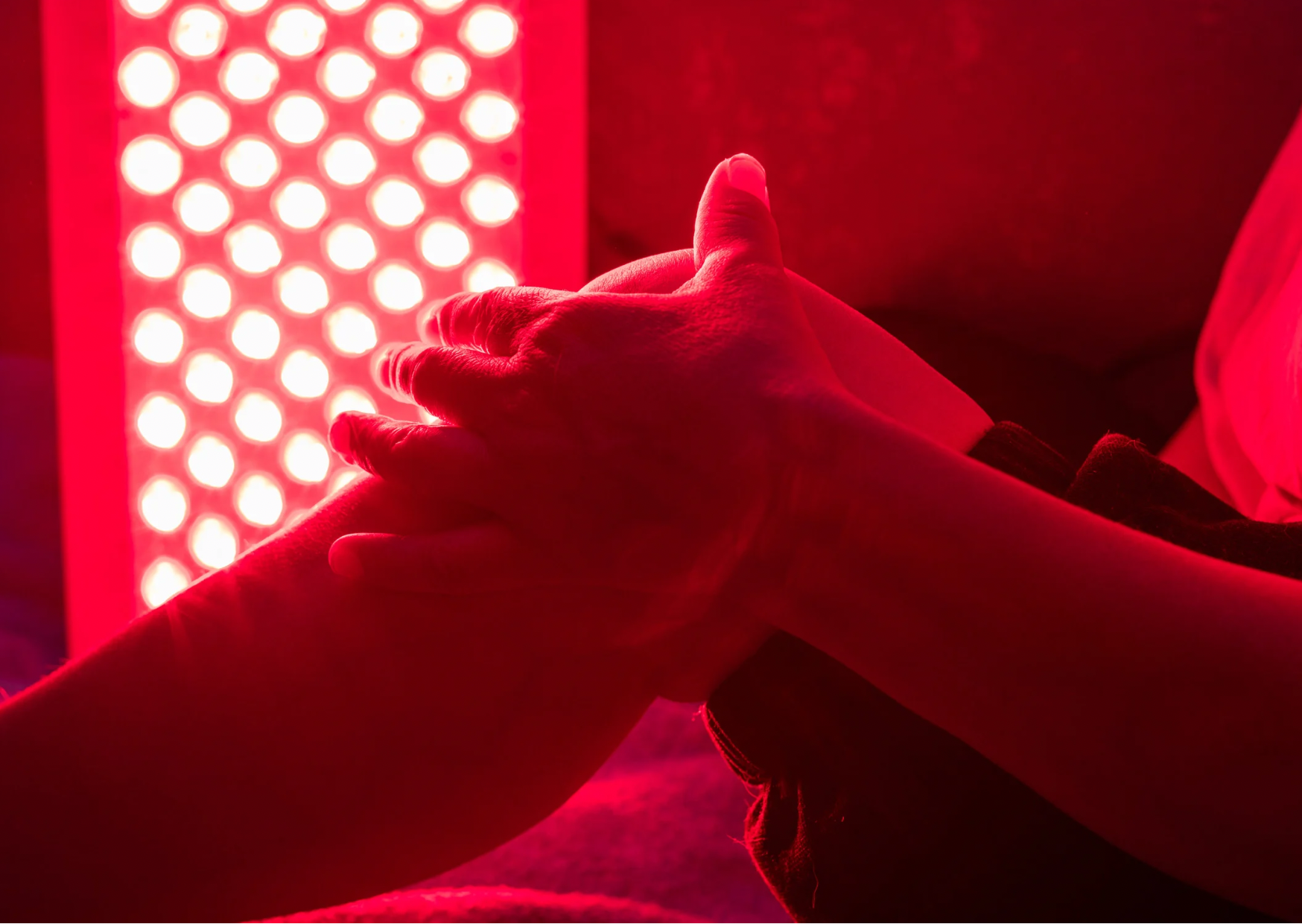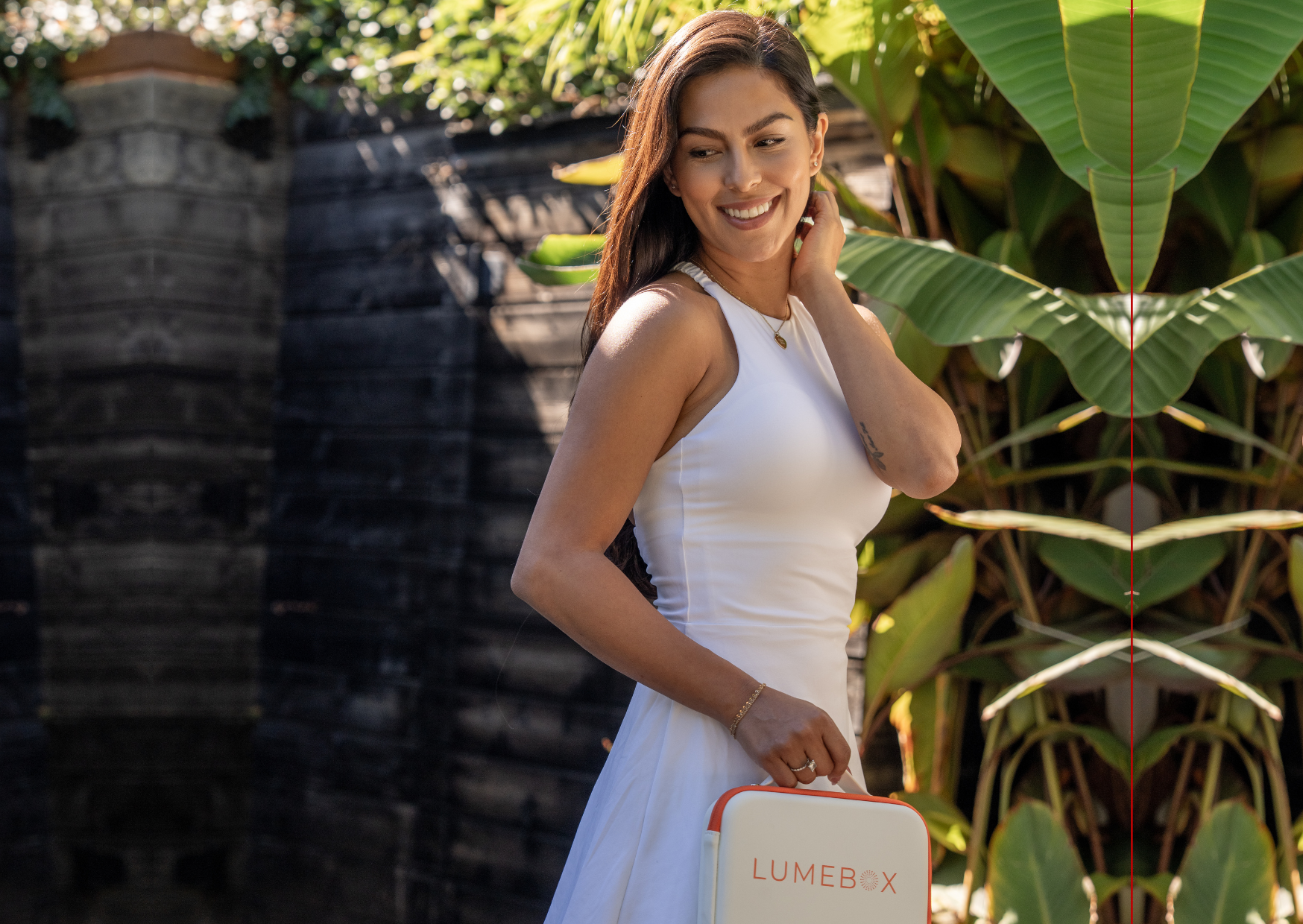Red Light Therapy For Skin - Do Masks Measure Up?
Red light therapy is everywhere. Celebrities are flaunting futuristic-looking masks, wands, and even pimple patches—but do they actually work? Just because something sits on your face doesn’t mean it’s better for your skin. Let’s break down the science.
What even is Red Light Therapy (RLT)?
Red light therapy (RLT) uses specific wavelengths of light, primarily red and near-infrared (NIR), to penetrate the skin and stimulate beneficial cellular responses.
Many high-quality, randomized, and split-face clinical studies suggest it may:
✔ Support collagen – improving skin elasticity and reducing the appearance of wrinkles.
✔ Reduce inflammation – helping with breakouts and skin irritation.
✔ Support blood flow – delivering that effortless, healthy glow.
This makes it one of the most well-researched and effective skincare treatments—IF you have the right device.
Because not all red light therapy devices are created equal.
Just like supplements need the right dosage to be effective, red light therapy requires a precise "dose" of light to deliver real results. Cheap, unverified devices on Amazon? They often lack the power, proper wavelengths, and testing needed to provide meaningful benefits.
What are Red Light Therapy Masks?
Red light therapy masks deliver light through small LED bulbs embedded in a face-shaped mask. At first glance, they seem convenient—just strap one on and let the red light do its work.
But here's the real question:
Are they worth it when they only work on the face?
To answer that, let’s get a little nerdy. If you’d rather skip the deep dive, jump ahead to the pros & cons of LUMEBOX vs. Masks.
It’s all about that ‘dose’.
Studies have shown that the ideal dose of red light for facial skin rejuvenation—minimizing the appearance of wrinkles and fine lines and promoting skin health—is 5-15 J/cm², with an optimal irradiance of ~25 mW/cm². [1,2,3,4]
If you’ve read our Kickstarter Guide, you know we recommend using LUMEBOX at a distance of 5–6 inches for 6 minutes. This isn’t a random guess—it’s based on rigorous third-party testing of its irradiance at 15 cm (6 inches).
Here’s what that means in numbers:

📌 At 15 cm, LUMEBOX delivers an irradiance of 22 mW/cm²—ideal for skin.
Not only that, but...
📌 At 15 cm, LUMEBOX provides even light coverage across the entire face. Now, compare that to a mask—where LEDs are spaced apart, resulting in patchy coverage.

Masks vs LUMEBOX
Here’s what you need to know:

Wavelength
Masks: Some masks include blue light, which may help with acne but is also pro-aging—it delays recovery of the skin [7] and can contribute to pigmentation [5, 6]. Others incorporate wavelengths like yellow, amber, or green, but these lack strong scientific backing for skin benefits.
LUMEBOX: Provides the two most scientifically studied wavelengths for skin rejuvenation—Red (660 nm) and Near-Infrared (850 nm).
Power & Time
Low-irradiance masks: Typically require 20–30 minutes of wear to deliver a sufficient dose of light.
LUMEBOX: isn’t just for your face. Unlike masks, which are limited to facial treatments, LUMEBOX can be used anywhere on the body because of its adjustable irradiance. When treating joints and muscles, we recommend using it as close to the skin as you can tolerate for deeper penetration.
However, for facial treatments, LUMEBOX delivers an optimal irradiance of 25 mW/cm² at 15 cm (6 inches) away, allowing you to achieve the ideal dose for skin rejuvenation in just 6 minutes.
This means one device delivers the right dose for both skin and deeper tissues—something masks simply can’t do.
Range of Benefits
Masks: With low irradiance, masks are only effective for facial skin and lack the power to benefit muscles, joints, or hair growth. Despite what some influencers claim, placing a mask over joints or on the head for hair growth goes against the scientific consensus, which shows that higher doses are required for these types of treatments.
LUMEBOX: Engineered for both skin and deep tissue benefits. Its high irradiance near the skin allows for effective penetration to reach joints, muscles, and deeper tissues—something a mask simply can’t do.
How to Choose a Good Red Light Therapy Device:
To experience the benefits of red light therapy, you need to get a quality device you can trust. Here’s what to look for:
✔️ FDA-registered as a Class II Medical Device.
✔️ Third-party tested for irradiance (ensuring it’s powerful enough to penetrate the skin barrier).
✔️ Emits red (630–660 nm) and near-infrared (810–850 nm) wavelengths – LUMEBOX delivers 660 nm and 850 nm, two of the most optimal wavelengths.
✔️ Multi-modal functionality – In other words, it’s not just for your face like a mask! A versatile device can be used on different areas of the body, making it a smarter long-term investment.
✔️ Portability – What sets LUMEBOX apart is its portability. Take it to the gym, in the car, to work, or even on vacation—ensuring you have access to this Swiss Army tool of wellness wherever you go.
New to red light therapy? Download our free eBook to help you choose the best device.
Already have a LUMEBOX? Download our 6 time-saving tricks guide!
Medical Disclaimer: The information contained in this blog post is intended for educational purposes only and should not be used as medical advice. Everyone responds to light differently. Testimonials are not a guarantee of the results you or anyone who uses LUMEBOX will get because your success depends entirely on your circumstances, and the studies on red light therapy shared were not specifically performed using LUMEBOX. Please check with your doctor before using red light therapy and do not change your medical treatments or lifestyle without consulting your physician first.
References:
[1] Couturaud V, Le Fur M, Pelletier M, Granotier F. Reverse skin aging signs by red light photobiomodulation. Skin Res Technol. 2023 Jul;29(7):e13391. doi: 10.1111/srt.13391. PMID: 37522497; PMCID: PMC10311288.
[2] Wunsch A, Matuschka K. A controlled trial to determine the efficacy of red and near-infrared light treatment in patient satisfaction, reduction of fine lines, wrinkles, skin roughness, and intradermal collagen density increase. Photomed Laser Surg. 2014 Feb;32(2):93-100. doi: 10.1089/pho.2013.3616. Epub 2013 Nov 28. PMID: 24286286; PMCID: PMC3926176.
[3] Ng JNC, Wanitphakdeedecha R, Yan C. Efficacy of home-use light-emitting diode device at 637 and 854-nm for facial rejuvenation: A split-face pilot study. J Cosmet Dermatol. 2020 Sep;19(9):2288-2294. doi: 10.1111/jocd.13613. Epub 2020 Jul 27. PMID: 32649063.
[4] Couturaud V, Le Fur M, Pelletier M, Granotier F. Reverse skin aging signs by red light photobiomodulation. Skin Res Technol. 2023 Jul;29(7):e13391. doi: 10.1111/srt.13391. PMID: 37522497; PMCID: PMC10311288.
[5] Falcone D., Uzunbajakava N.E., van Abeelen F., Oversluizen G., Peppelman M., van Erp P.E.J., van de Kerkhof P.C.M. Effects of blue light on inflammation and skin barrier recovery following acute perturbation. Pilot study results in healthy human subjects. Photodermatol. Photoimmunol. Photomed. 2018;34:184–193. doi: 10.1111/phpp.12367.
[6] Jagdeo, J., Austin, E., Mamalis, A., Wong, C., Ho, D., & Siegel, D. M. (2018). Light‐emitting diodes in dermatology: A systematic review of randomized controlled trials. Lasers in surgery and medicine, 50(6), 613-628.
[7] Denda, M., & Fuziwara, S. (2008). Visible radiation affects epidermal permeability barrier recovery: selective effects of red and blue light. Journal of Investigative Dermatology, 128(5), 1335-1335.





